Since its launch in 2017 for the city’s 500th anniversary, One Summer in Le Havre has been offering international artists the opportunity to create works of art that echo the identity of the Porte Océane every year.
Our selection for a walk in Le Havre.
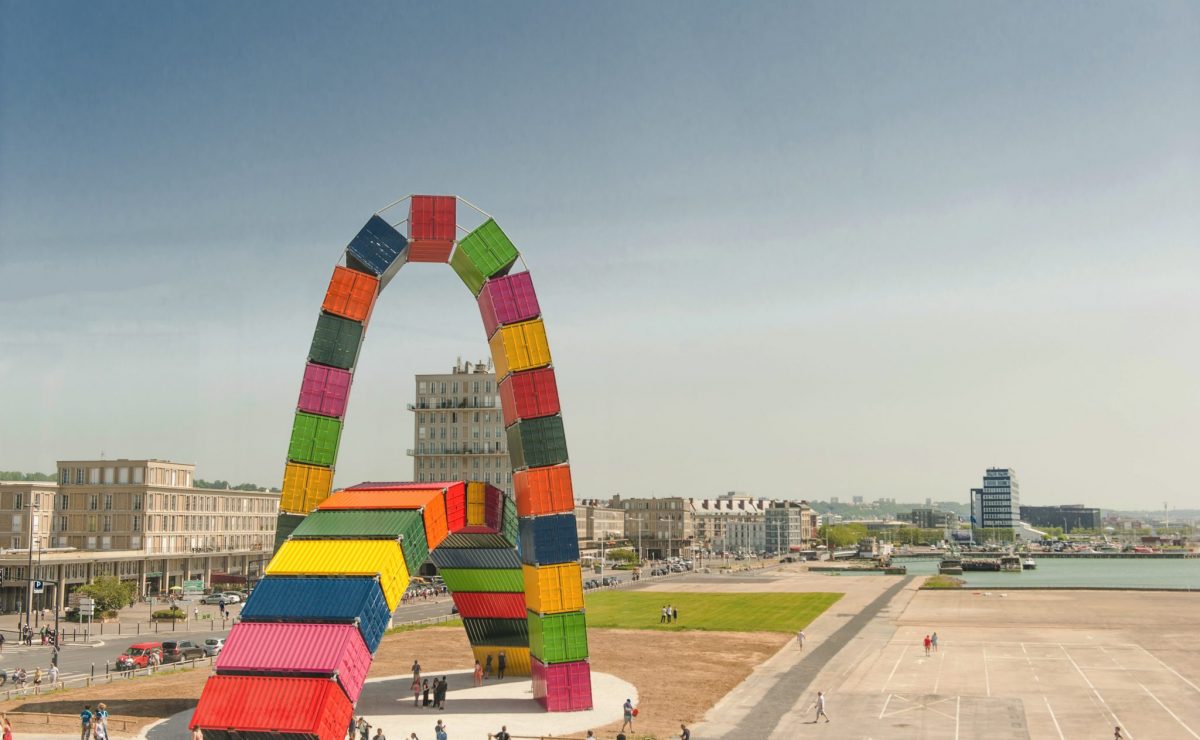
01Catène de containers (Vincent Canivet)
At the beginning of the 1980s, Oscar Niemeyer implanted the Volcan and its curved forms among the rectilinear buildings constructed by Auguste Perret. The same audacity emanates from the work of Vincent Canivet, who succeeded in the challenge of creating two light and majestic arches with 36 containers, these rigid orthogonal transport boxes typical of the Le Havre landscape.
This work created for the 500th anniversary of the city of Le Havre has become its Eiffel Tower!
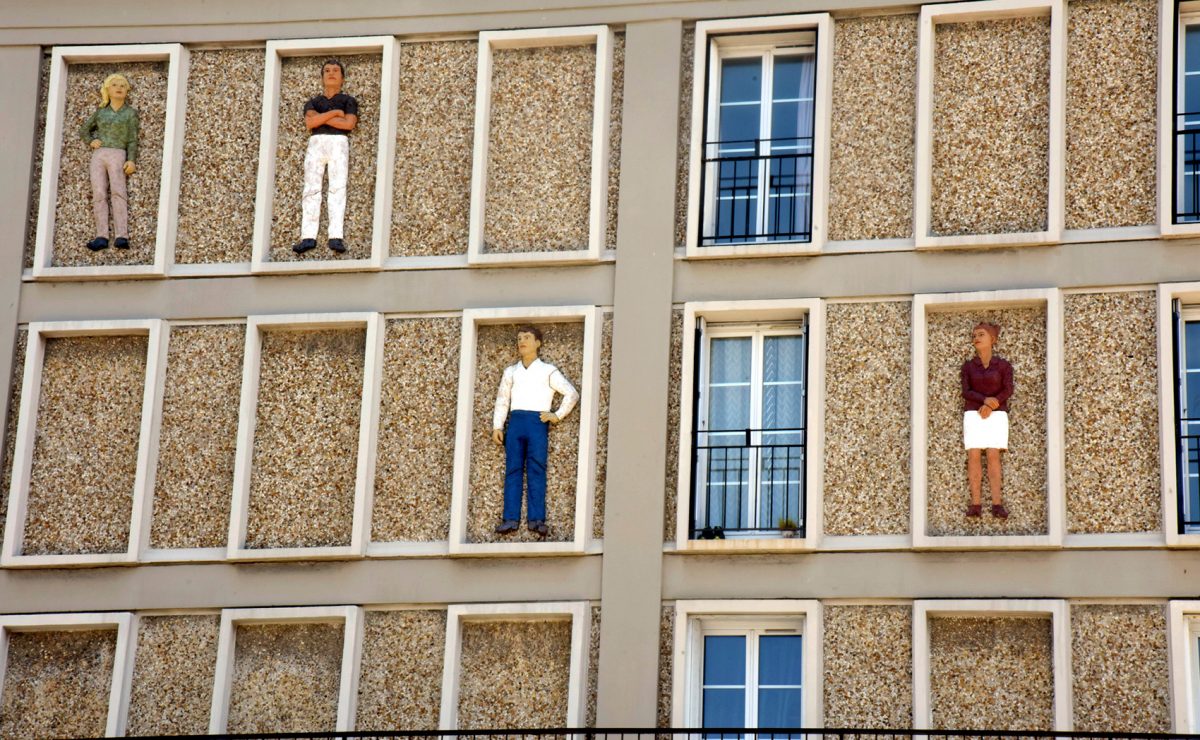
02Apparitions (Stephan Balkenhol)
Human or animal bodies are the Austrian artist’s favourite subjects. In Le Havre, he makes very human, mysterious and naive characters appear from window frames that have never been installed: he thus creates his own law of attraction!
Raise your head and observe!
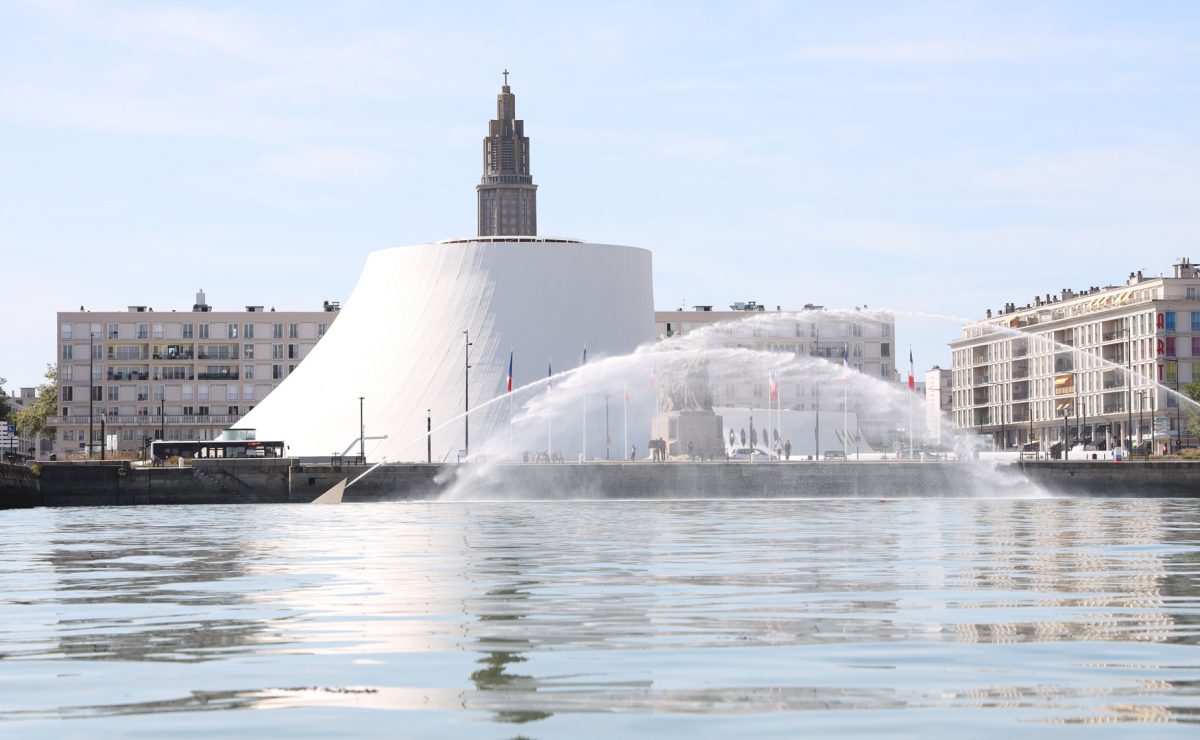
03Impact
(Stéphane Tidet)
From the waters of the Commerce Basin, facing the Volcan, two jets of water regularly collide. Take a seat on one of the benches on the quay, wait a while and you will see and hear the power of this 21st-century fountain!
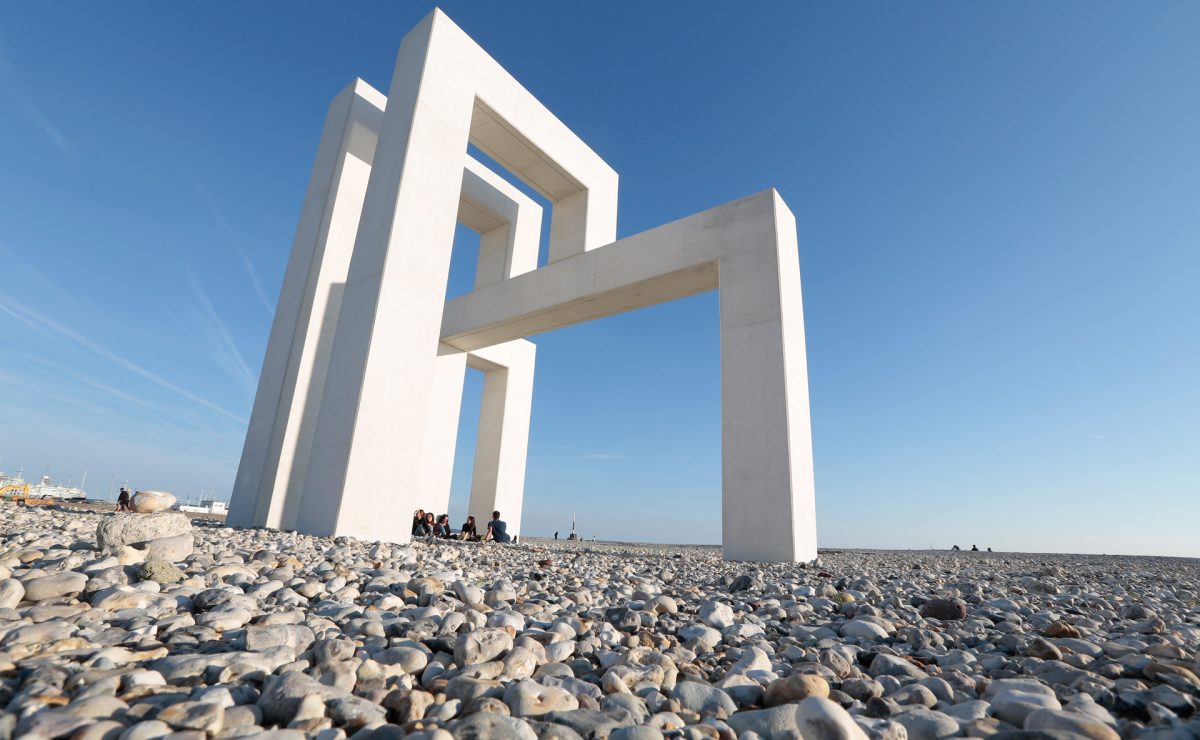
04UP#3
(Sabine Lang and Daniel Bauman)
Artists Sabina Lang and Daniel Baumann have created a work that punctuates the perspective of Avenue Foch. Their 10-metre-high white concrete portico emerges among the pebbles of the beach, thus linking it to the city.
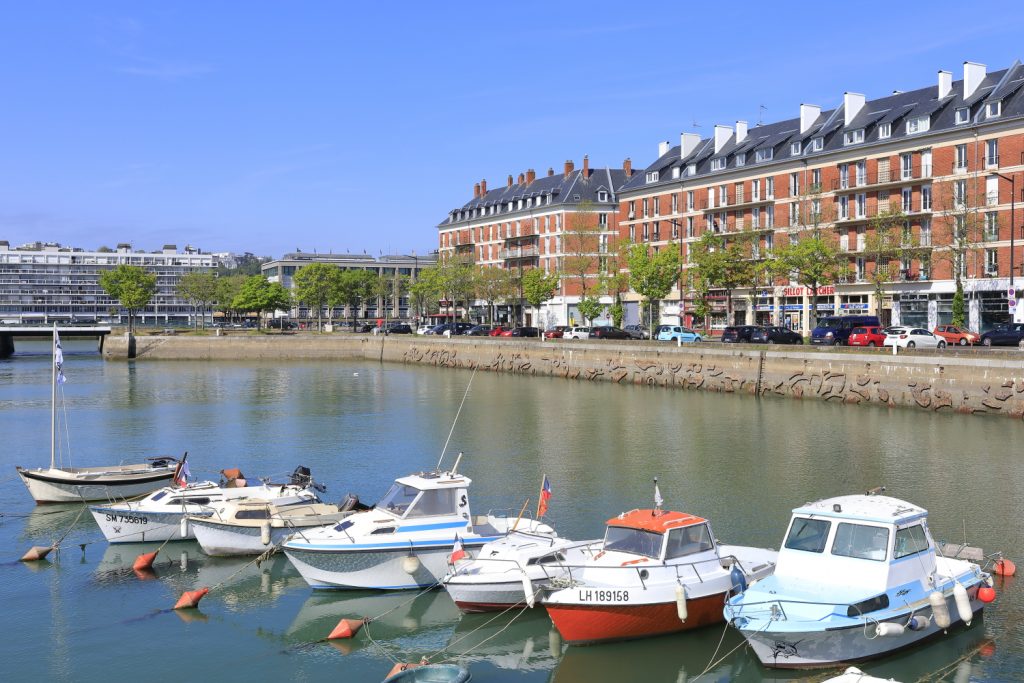
05Ghost Gardens (Baptiste Debombourg)
It is a monumental and moving work that is rooted in the history of Le Havre. It should be admired at the Bassin du Roy, a body of water near which sits the statue of François I, the founding king of the city. The artist Baptiste Debombourg took an interest in the remains of this instigator who introduced the Italian Renaissance to France.
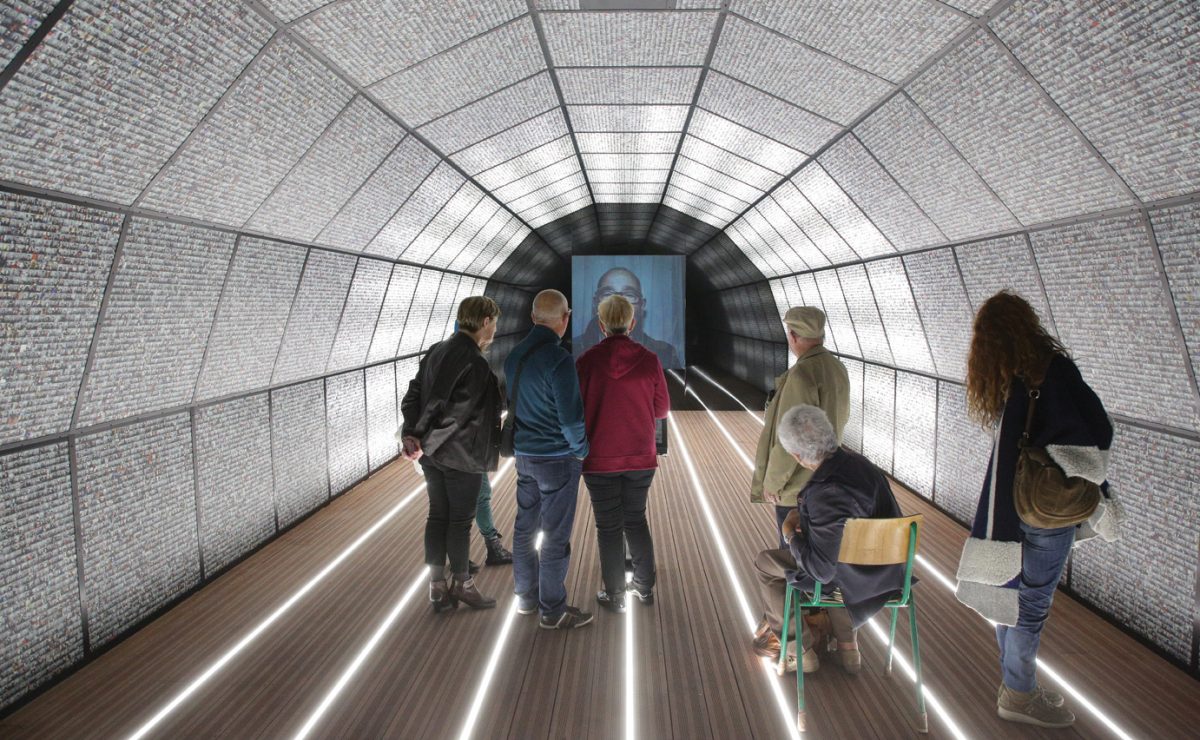
06Time stands still (Cheval vert)
In 2017, several tens of thousands of Le Havre residents had their portraits taken. This large family photo is presented in an original form: an interactive mega-face book housed in one of the powder magazines of the Hanging Gardens. A real experience!
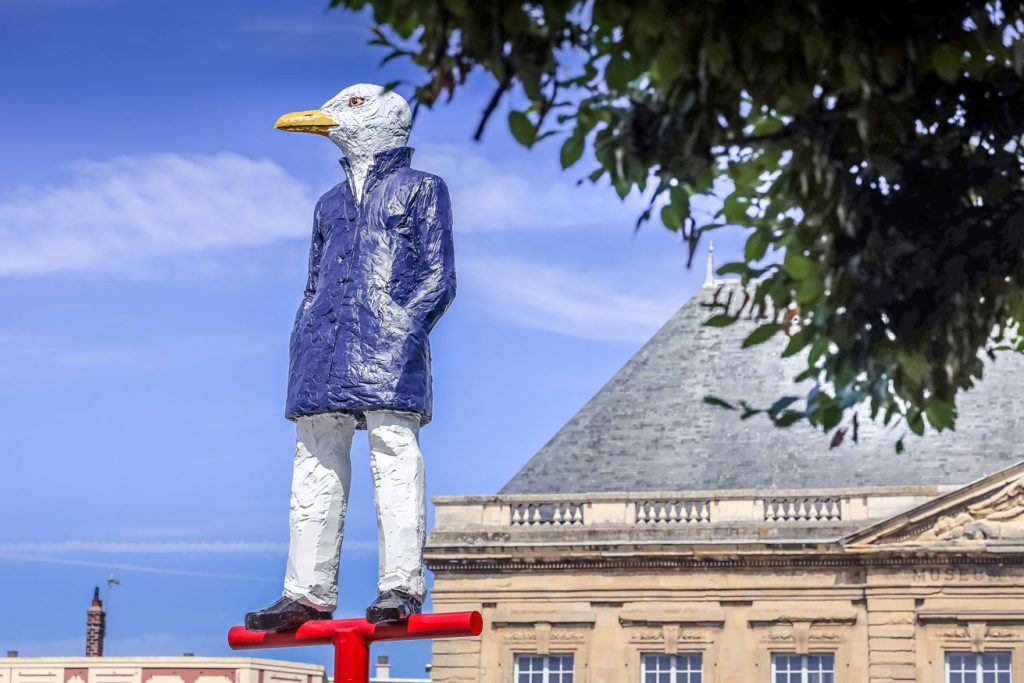
07Mr Goeland
(Stephan Balkenhol)
This man with the head of a gull is hoisted on a hybrid support, which is as much from the perch as from the mast and its yard. He wears a pea coat, the emblematic garment of seafarers: navigators, fishermen, pirates… Installed on the esplanade of the Museum of Le Havre, surrounded by buildings, Mr. Goéland stretches towards the sky, as if to seek the sea present around. This monumental sculpture in painted bronze, 2m80, is placed on a perch of 3m20.
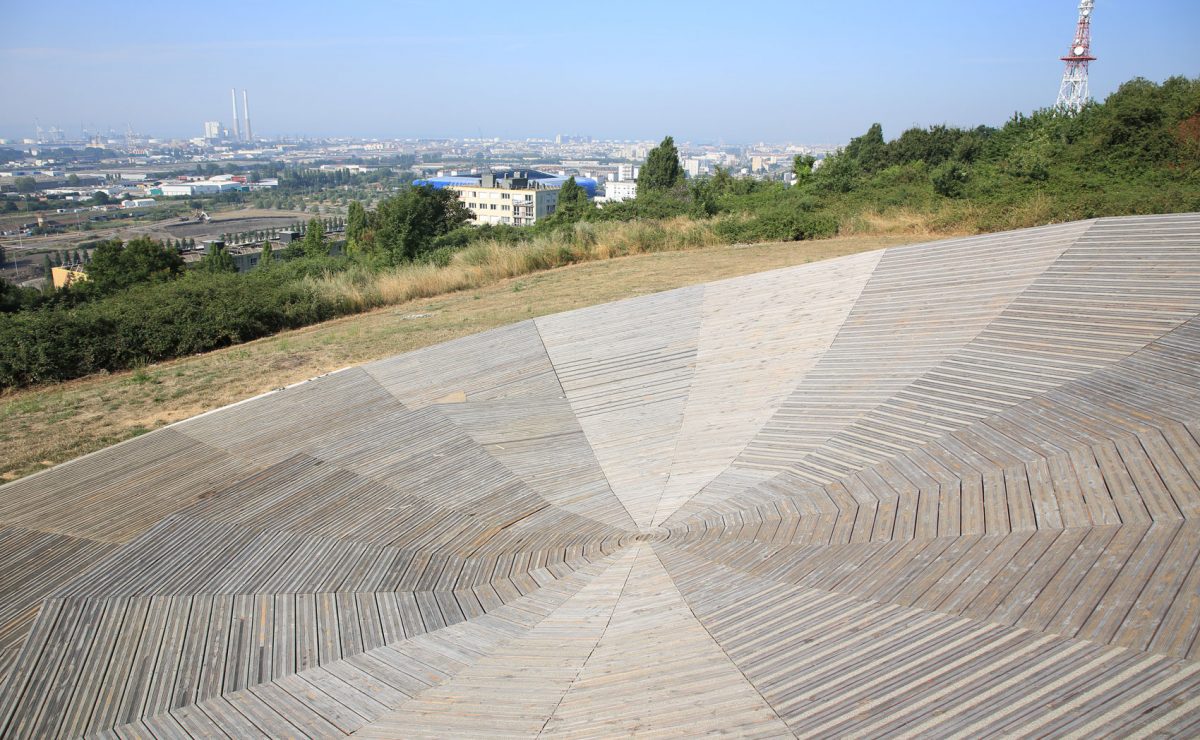
08Parabole
(Alexandre Moronnoz)
Get off the beaten track! In the modern district of Caucriauville, created 50 years ago and accessible by tram, this wooden disk 15 metres in diameter offers a superb panorama of the Seine estuary and port of Le Havre. Balanced on the skyline, the place is perfect for a break!
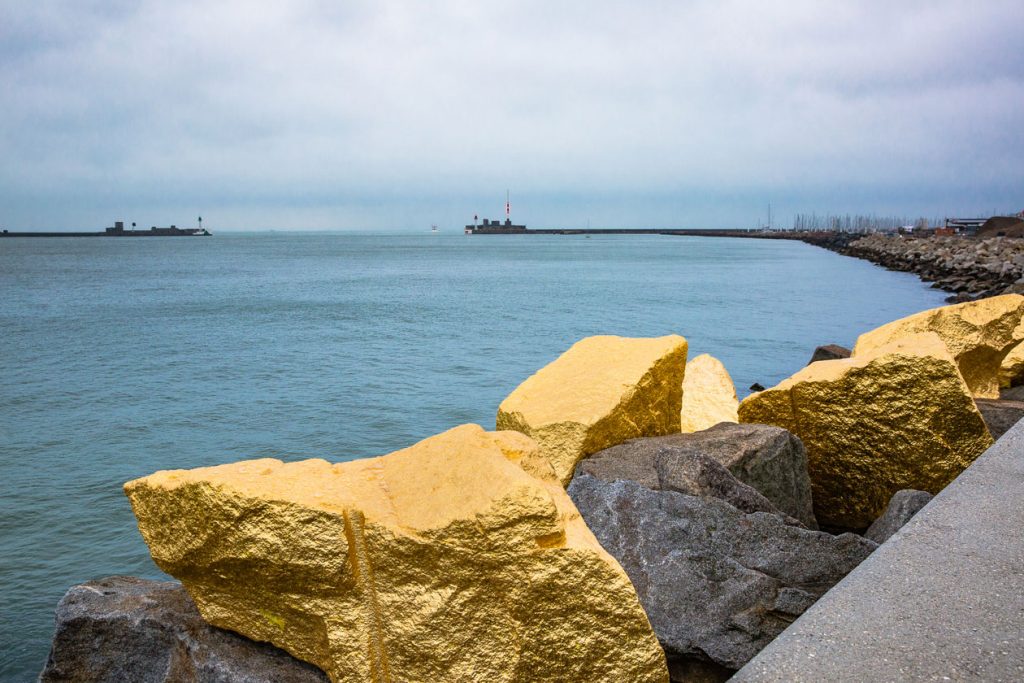
09Gold Coast (HeHe)
Gold Coast stands in contrast to the clarity of the polished concrete, with the blues and grays of the mineral and maritime landscape, giving a new aesthetic to this esplanade. The riprap is covered in gold like the architecture of a precious heritage.
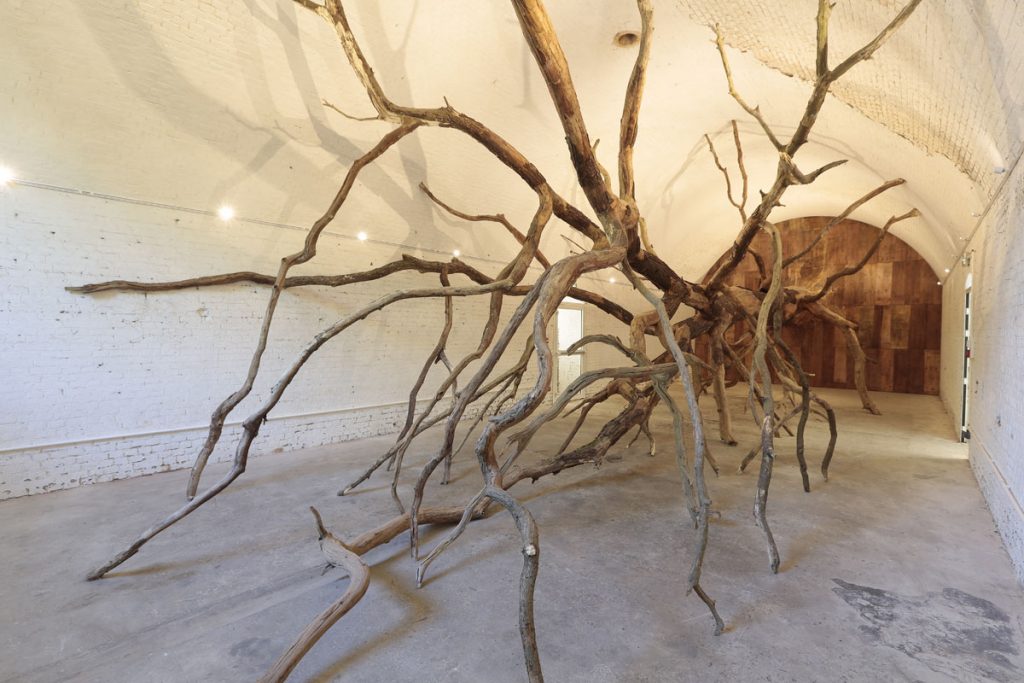
10Sisyphus casemate (Henrique Oliveira)
This sculpture, monumental, organic, familiar in its appearance, carries within it a form of mystery that pushes the viewer to question what he is facing. A work as enigmatic as it is obvious, it naturally takes its place in the heart of a botanical garden dedicated to the preservation of nature. Installed in one of the cells of the building, it breaks with the rigorous architecture of the place, and embraces its shapes, hollows and cracks.
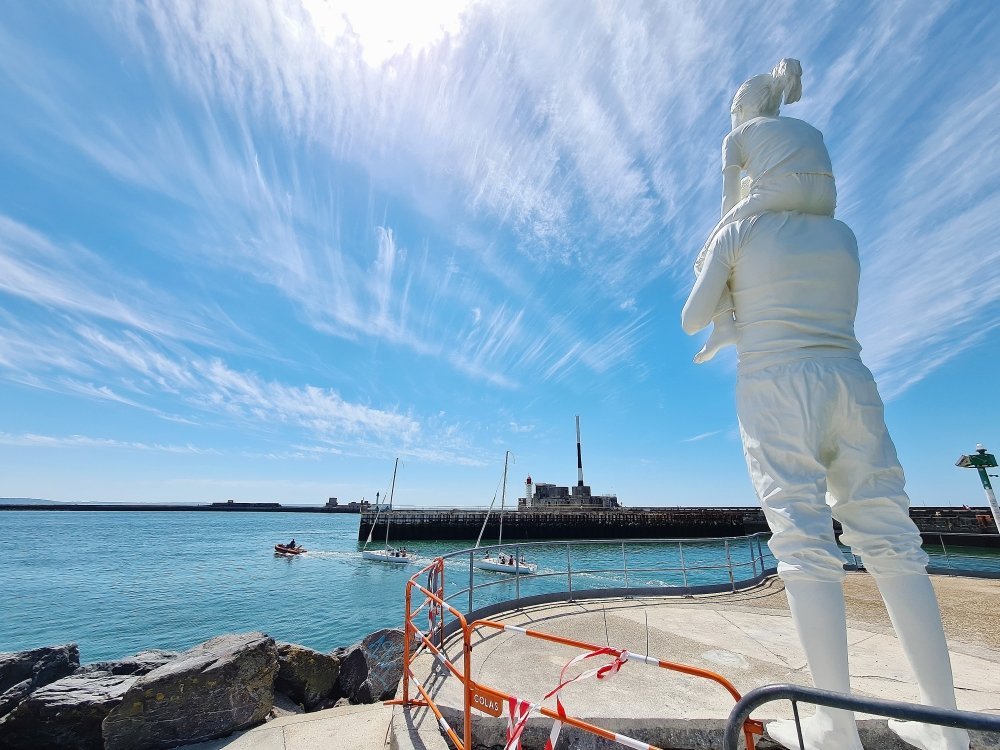
11Till the end of the world (Fabien Merelle)
The two characters observe, from their 6.24m height, the maritime horizon and the ships that cross it. By an imaginary line, they also look towards New York, formerly linked to Le Havre by the Transatlantic line. A reminder of the past that resonates particularly in the family history of the artist, and in those of so many other people from Le Havre. But this sculpture also testifies to filiation, to the love of a father accompanying his daughter until she can follow her own path.
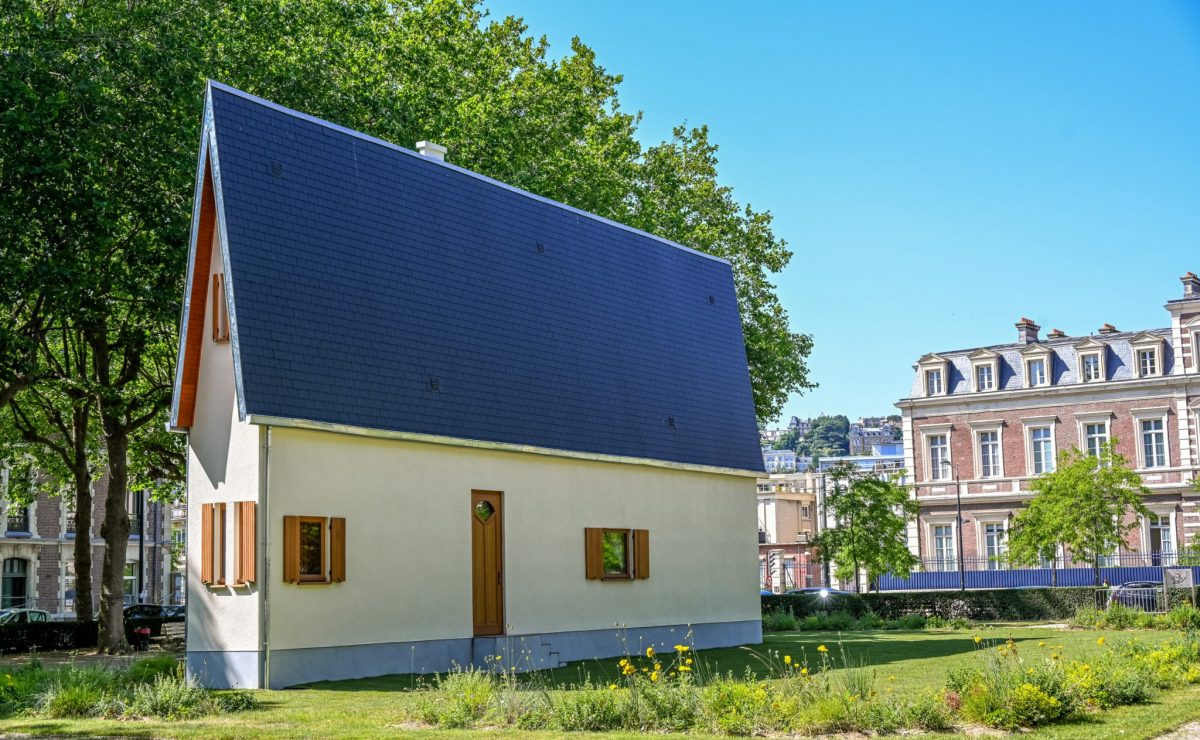
12Narrow House (Erwin Wurm)
Installed for the first time on Avenue Foch in Le Havre in 2019, the Narrow House is back to settle permanently in Square Érignac.The wooded and landscaped park offers a garden to this typical suburban house from the 70s, whose narrowness appears all the more clear.
Several versions of this work have existed; it is the first whose interior can be visited, and which is placed in a public space. All the objects and furniture that furnish it seem to have been compressed, stretched. As one advances between its walls, the rooms are added until they become too narrow for one to enter.
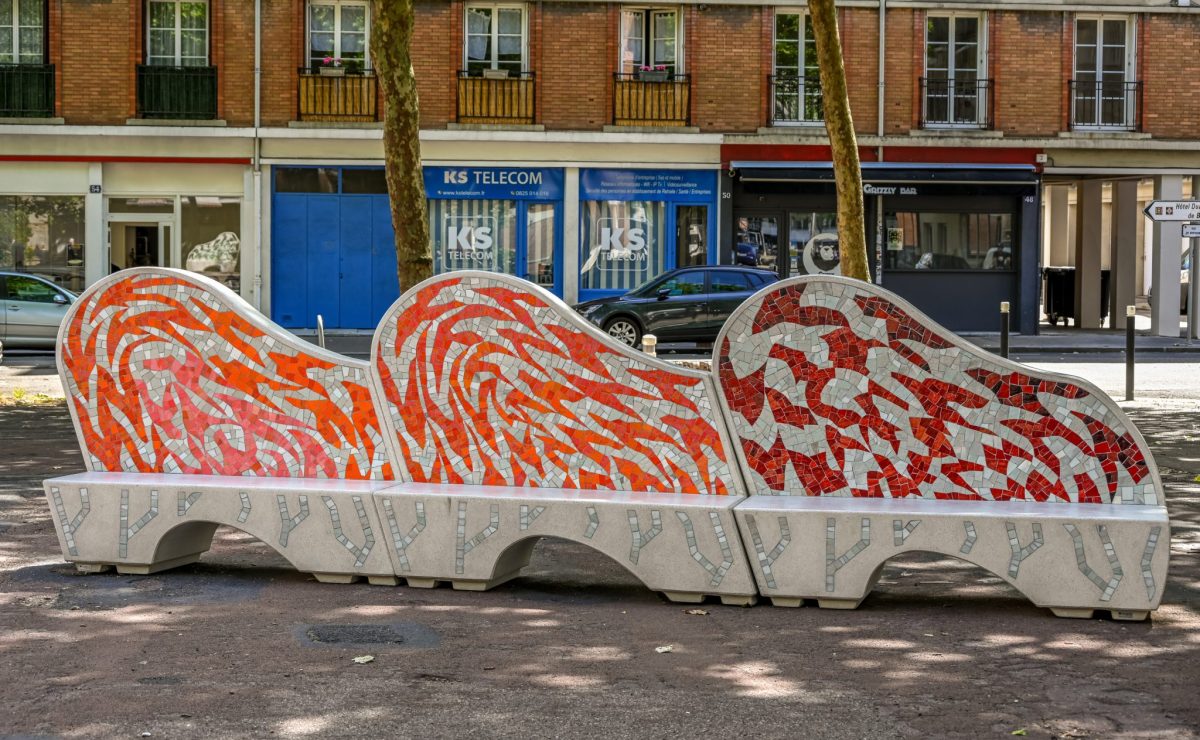
13Algae and shellfish
(Emma Biggs)
When she came to Le Havre, Emma Biggs was inspired by the sensations, colors and shapes she encountered on her way, to imagine three series of benches.
The creation of the benches is accompanied by an intervention on two exterior arches of the Saint-François church, located on the square.
These three benches are made of pre-fabricated concrete, evoking the very material of the city center rebuilt by Auguste Perret after the war. The backs of the benches are covered with mosaics arranged in the manner of “structured fragmentation”.
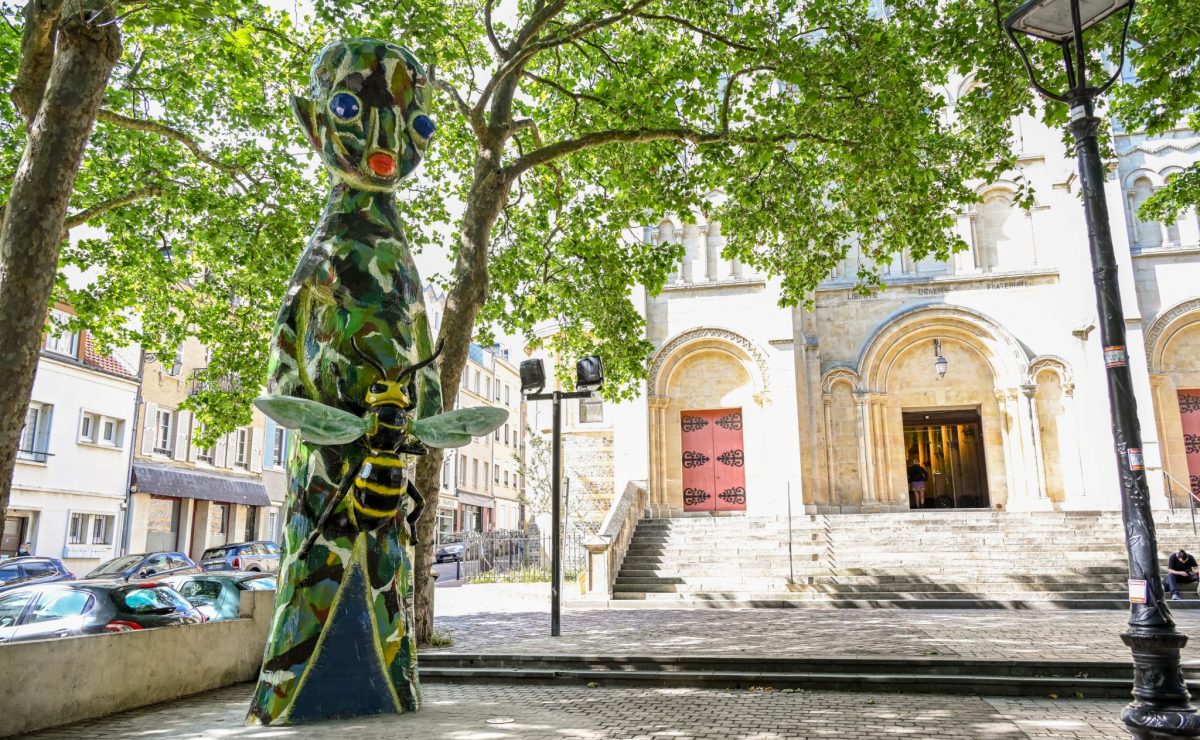
14Untitled
(Izumi Kato)
A monumental and colorful figure stands on Place Saint-Vincent-de-Paul.
This silent giant seems foreign in this environment, appearing between the trees whose vegetation it nevertheless imitates like a camouflage.
Let us remember that the choice to represent humanoids is above all, for Izumi Kato, a pretext for painting; the colors are expressed on this character, much more than his stoic attitude which would almost transform him into a totem. It is also reminiscent of the creations of traditional arts, its appearance reminiscent of a genius more than a human, its enigmatic presence imposing itself on us.
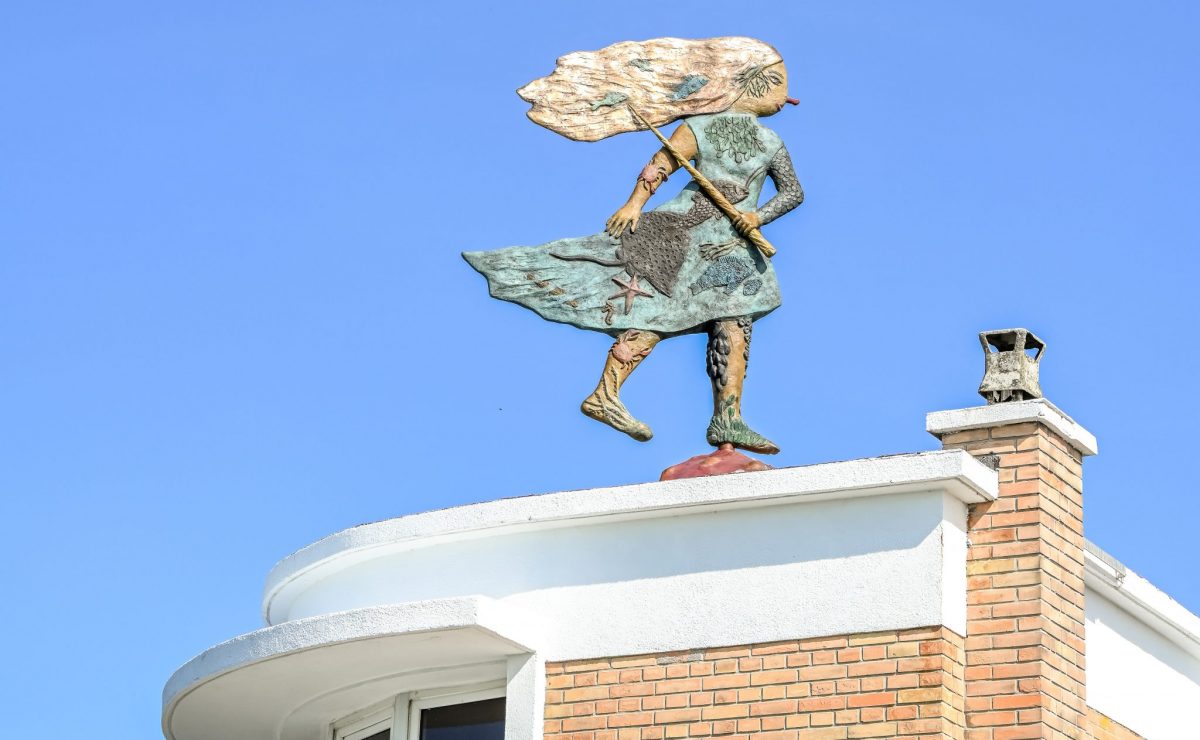
15Sea Witch
(Klara Kristalova)
Standing like a figurehead, or a possible muse of the Saint-François district, Sorcière de la mer can be seen at the top of a maneuvering vessel, backlit from the sky. Its imperfect contours outline a real creature from the seabed, with mysterious powers, whose skin, dress and hair are a refuge for marine fauna and flora. It also evokes a childish figure, reflecting the joy of living by the sea and harvesting its many treasures; like the men and women who have brought this neighborhood to life for centuries, dumping and trading their finds on their return from the sea.
Made in bronze, the sculpture painted by Klara Kristalova also serves as a weather vane.
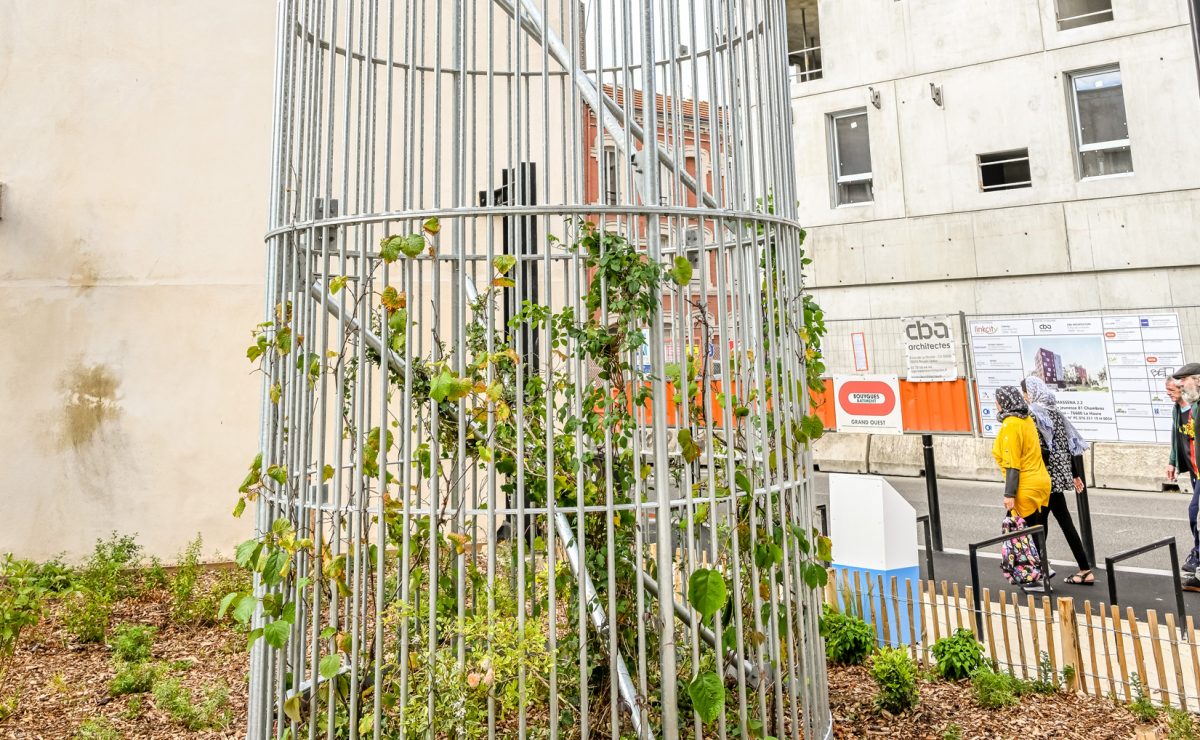
16Talkative for Aimé (Evor)
In response to research from Logeo Seine, a housing operator, the Nantes artist Evor imagined an installation which will take place in the Aimé Césaire alley: a plant cylinder which will invite nature into the urban space, a structure to be conquered for climbing plants.
This evolving work will green over the years, before the eyes of passers-by and residents who will be able to observe its slow growth.
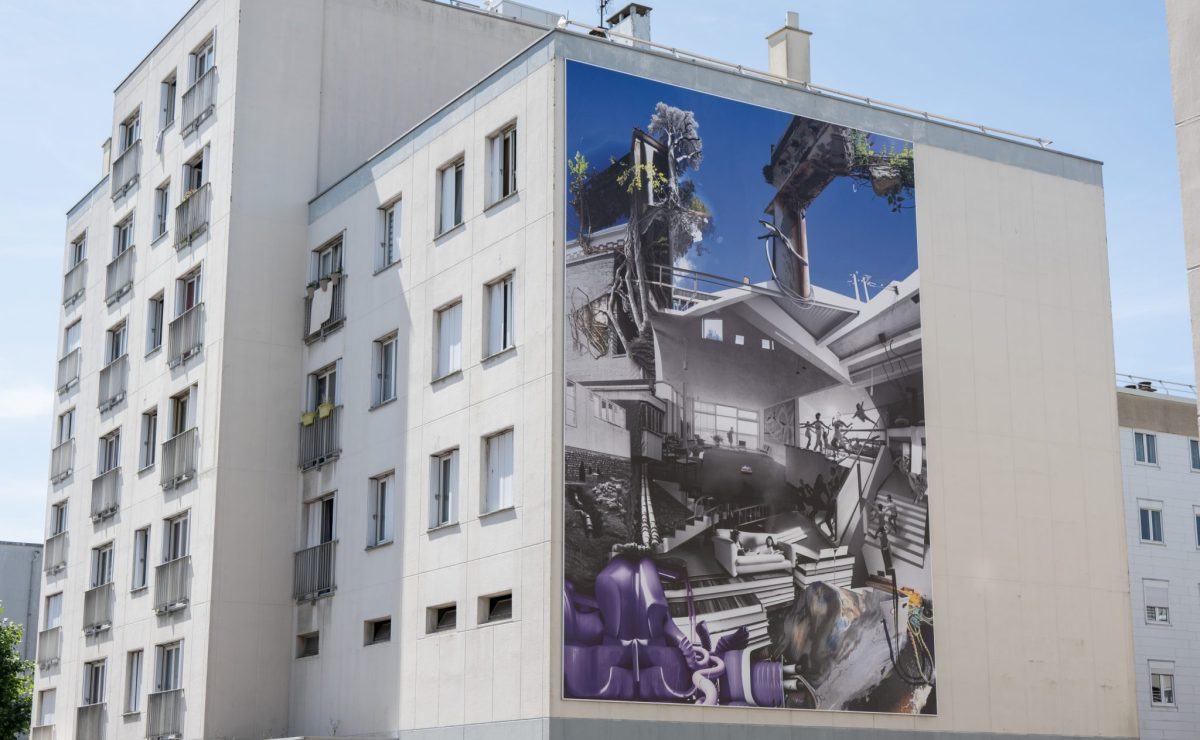
17The city
that didn't exist
(Grégory Chatonsky)
On 25 walls of buildings of the social landlord Alcéane, frescoes based on photographic archives, prior to the destruction of the city, reconstruct baroque landscapes, where the infinitely small rubs shoulders with the immense, telling through this change of scale another industrial revolution in which nature and technology would not be separated, where roots and pipes would be mixed and where pollution and waste would mix with the landscapes, returning to the slow work of erosion of the Earth.
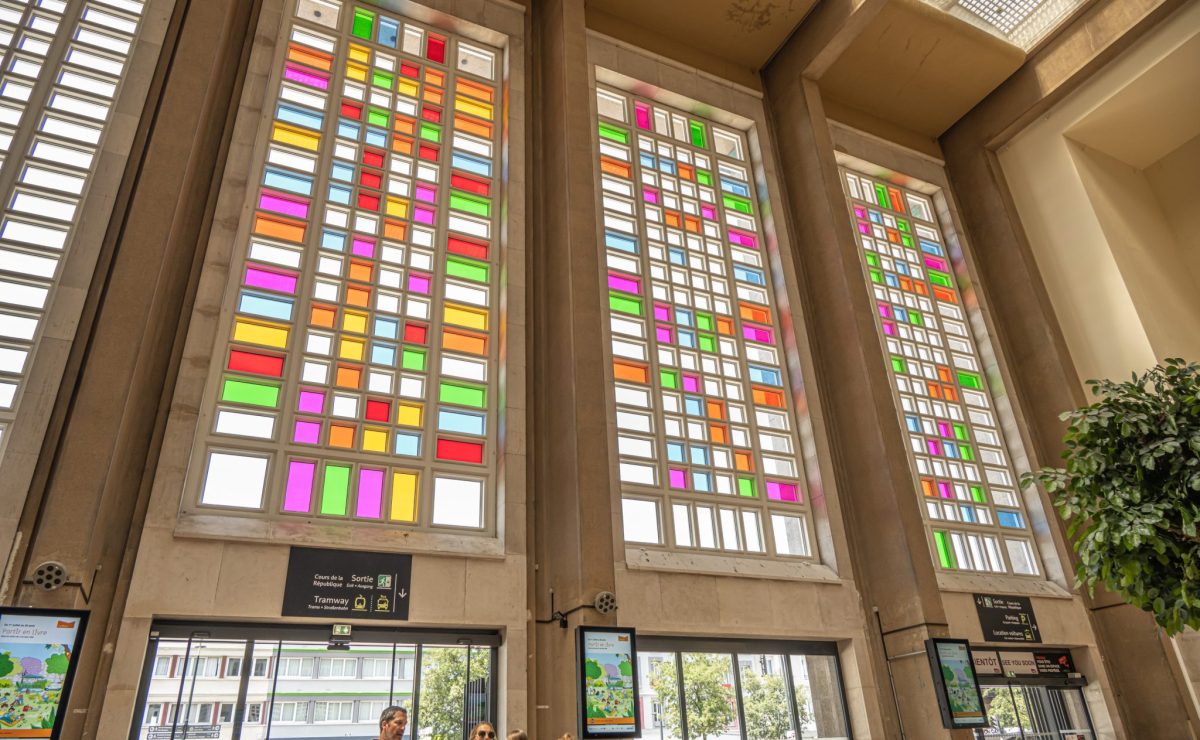
18Coupes
(Isabelle Cornaro)
For Un Été Au Havre, Isabelle Cornaro continues her reflections on objects and their image, on the notion of original and copy. Invited to work at Le Havre station, the artist was inspired by the emblematic Saint-Joseph church, which had a great impact on her during her stays. She imagined a double rereading, a double tribute to the talent of Auguste Perret. She transformed the large bay windows of Le Havre station, taking inspiration from the color chart of the church’s stained glass windows, designed by Marguerite Huré.
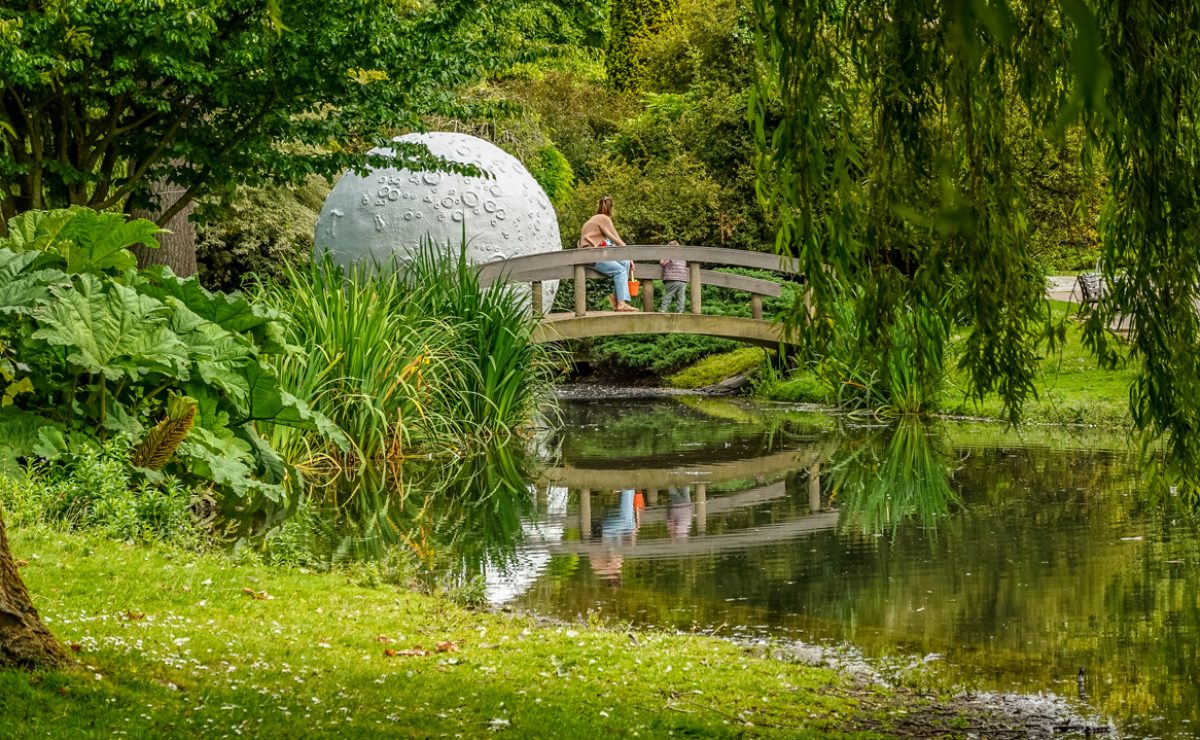
19The moon landed in Le Havre (Arthur Gosse)
The Moon landed in Le Havre and more precisely in one of the pools of Square Saint-Roch.The star rests without gravity, in the heart of the vegetation; a surreal image takes shape, lays the beginnings of a fabulous story. The Moon could not have fallen better, in this romantic and wooded setting. Usually elusive, here it takes on thickness and substance, and its surface also evokes the grainy concrete of the surfaces of the reconstructed city center. The comparison between this object and the port city does not stop there: “Le Havre is like the moon, it’s gray, it’s far, no one goes there and yet it’s a fascinating place. ” Arthur Gosse
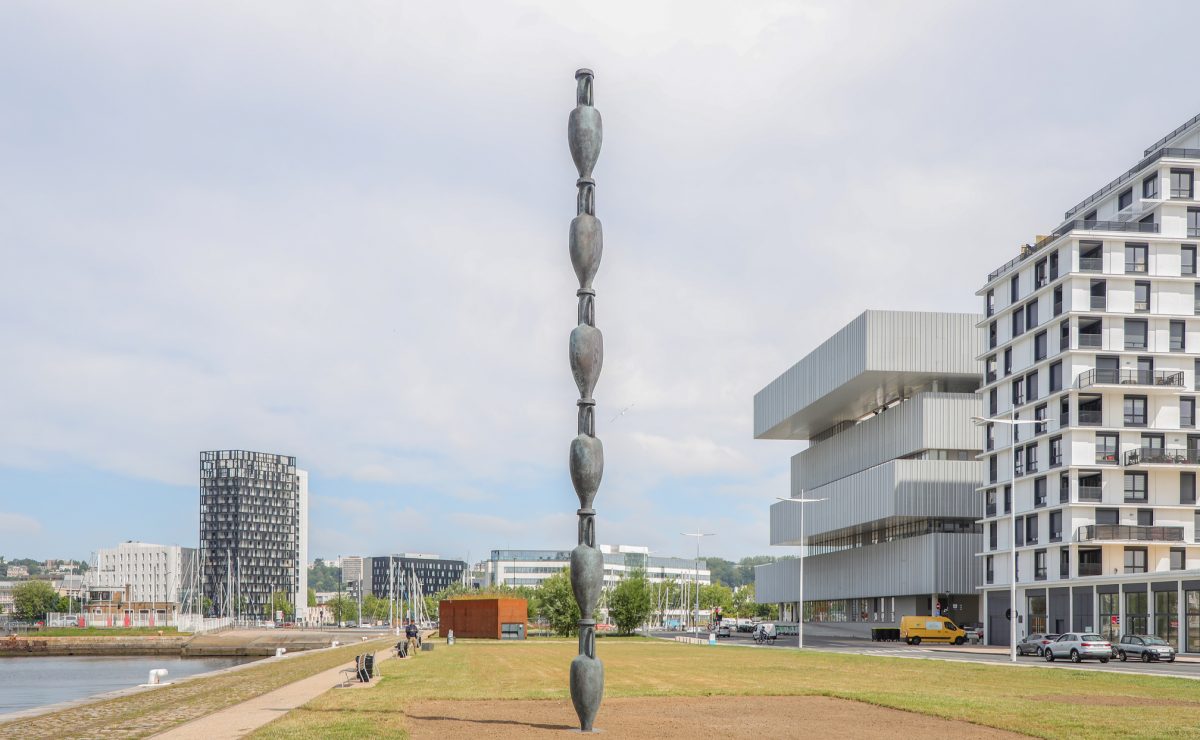
20Pacifique
(Edgar Sarin)
Pacifique is a patinated bronze sculpture constructed by the repetition of an amphora which is stacked six times on itself to reach a height of more than 10 meters. In ancient times, the amphora was the “standard” object containing many goods in the flow of trade. They were loaded by the hundreds on ships traveling the Mediterranean basin, transporting wine, olive oil and other basic products: the amphora was indeed the ancient container… Edgar Sarin wanted to imagine in Le Havre a survival of this form, a witness erected as a landmark in space and time. These amphorae thus repeated place them on the scale of the contemporary containers that we see on the other side of the basin. They are part of this vocabulary made up of boat masts, cranes or signal lighthouses, which are the common places of the port.
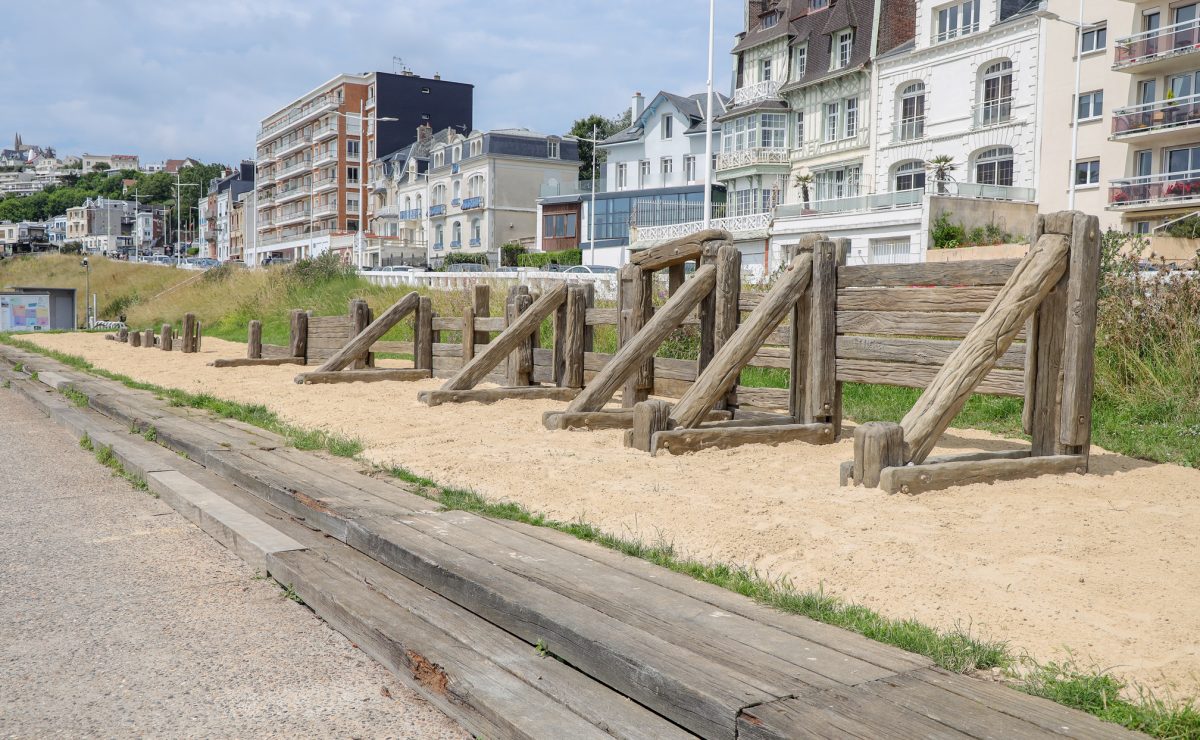
21Ear (Stéphane Vigny)
In February 2024, the last wooden groyne on Le Havre beach was dismantled. Using rusticage (or rockwork), a cement modeling technique inherited from 19th century gardeners to imitate nature, Stéphane Vigny reproduces the ear in its used state, just before its removal and at actual size (i.e. almost 30 meters long!) to install it as an extension of the beach promenade. Stéphane Vigny’s ear of corn thus functions as a witness sculpture, an object that is both offbeat (the original was a few dozen meters away…) and symbolic, since it was made in a technique which is the ancestor of reinforced concrete, so expensive to the harbor. But this time the groyne is no longer subject to the incessant crashing of the pebbles it is supposed to contain: it now sits as a relic of this permanent fight that man wages against nature to maintain the coastline.
Location map
Catène de containers (Vincent Canivet)
Catène de containers (Vincent Canivet)
Apparitions (Stephan Balkenhol)
Apparitions (Stephan Balkenhol)
Impact (Stéphane Tidet)
Impact (Stéphane Tidet)
UP#3 (Sabine Lang et Daniel Bauman)
UP#3 (Sabine Lang et Daniel Bauman)
Jardins fantômes (Baptiste Debombourg)
Jardins fantômes (Baptiste Debombourg)
Le temps suspendu (Cheval vert)
Le temps suspendu (Cheval vert)
Monsieur Goëland (Stephan Balkenhol)
Monsieur Goëland (Stephan Balkenhol)
Parabole (Alexandre Moronnoz)
Parabole (Alexandre Moronnoz)
Gold Coast (HeHe)
Gold Coast (HeHe)
Sisyphus casemate (Henrique Oliveira)
Sisyphus casemate (Henrique Oliveira)
Jusqu'au bout du monde (Fabien Mérelle)
Jusqu'au bout du monde (Fabien Mérelle)
Narrow House (Erwin Wurm)
Narrow House (Erwin Wurm)
Algues et coquillages (Emma Biggs)
Algues et coquillages (Emma Biggs)
Sans titre (Izumi Kato)
Sans titre (Izumi Kato)
Sorcière de la mer (Klara Kristalova)
Sorcière de la mer (Klara Kristalova)
Volubiles pour Aimé (Evor)
Volubiles pour Aimé (Evor)
La ville qui n'existait pas (Grégory Chatonsky)
La ville qui n'existait pas (Grégory Chatonsky)
Coupes (Isabelle Cornaro)
Coupes (Isabelle Cornaro)
La lune s'est posée au Havre (Arthur Gosse)
La lune s'est posée au Havre (Arthur Gosse)
Pacifique (Edgar Sarin)
Pacifique (Edgar Sarin)
Épi (Stéphane Vigny)
Épi (Stéphane Vigny)
